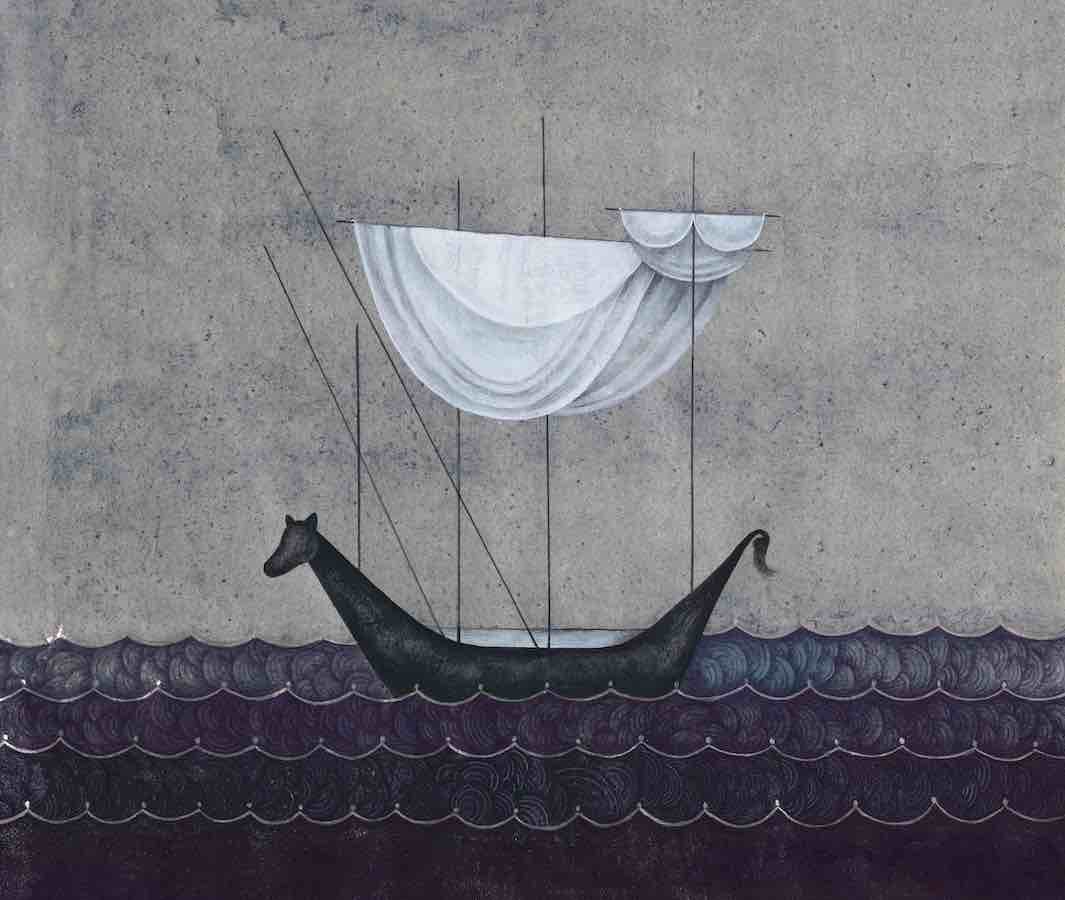LONDON: “The moment you start fighting the medium is the moment it will start fighting back and you’re not going to achieve the results you want.” This is the advice artist Yasmin Hayat gives her students as they try to master the art of miniature painting.
“You have to have an extreme amount of patience,” Hayat tells Arab News. “I always tell my students, ‘You have to treat it as a meditation — don’t go in expecting to come out with a painting within a week.’”
Her own dedication to the art form can be seen in her beautifully intricate work “For the Love of Damascus” — a tribute to the magnificent Umayyad Mosque in the heart of the Syrian capital.

Hayat notes that there is a tendency in the art world to elevate oil painting over water colors. (Supplied)
Hayat, whose father is Syrian and mother English, visited the mosque on family trips to Syria. “People would go and sit in the courtyard of this sacred space for hours and hours away from the hustle and bustle of the streets. You are surrounded by golden mosaics telling a story all around the walls,” she says. “I have such a longing for Damascus. There is a sadness that goes with that longing — knowing that I won’t be able to go back for some time.”
When the war broke out in Syria, Hayat was close to graduating from Central Saint Martins in London where she studied contemporary art. She found herself increasingly drawn to exploring her Arab heritage and went on to take a Masters in Visual Islamic Art & Architecture.
Hayat notes that there is a tendency in the art world to elevate oil painting over water colors. But her own experience has made her question that view.

Her own dedication to the art form can be seen in her beautifully intricate work “For the Love of Damascus.” (Supplied)
“Having come from an oil-painting background, I can say that there’s nothing more challenging — or requiring so much discipline — as miniature painting with water colors. I have a lot of respect for the tradition. This art was handed down from master to apprentice,” she says. “I like the refined, soft finish that the longer, slower process produces.”
Hayat is also a skilled ceramicist as demonstrated in her four exquisite plates currently on show in “Making Paradise: Exploring the concept of Eden through Art & Islamic Garden Design,” at the Aga Khan Center in London.
“I had been doing research on fruits and plants that are referenced across a lot of scriptures in the Middle East region. I did the plates in the Syrian Iznik style using purples and blues rather than the bold red characteristic of the ultra-refined Turkish Iznik,” she explained.

Hayat is also a skilled ceramicist as demonstrated in her four exquisite plates currently. (Supplied)
Hayat, who has led workshops and master classes at the British Museum, the Watts Gallery and at the Al-Burda Festival in Abu Dhabi, has been teaching online over the past Covid-impacted year. She has been taken aback by the demand for lessons in the foundations of miniature painting from people all over the world. While she loves sharing her knowledge with so many eager practitioners, she believes that nothing really compares to the in-person experience.
“Art has its limitations online. Things like how a person is holding their brush or the angle they are using it are more easily addressed face-to-face,” she said.

“Come to the Jasmine” is by Yasmin Hayat. (Supplied)
As a new mother whose baby girl could be heard in the background of our Zoom interview, Hayat is currently on maternity leave. Asked how she intends to maintain a good work-life balance, she said: “I have always had non-negotiable days. On Mondays, Wednesdays and Fridays I turn off my phone and computer from 9 a.m. until the evening. These are my ‘sacred’ art days for painting and the creative process — thinking and research. I’m lucky to be able to do this.”
A constant desire to learn more is perhaps the most important dimension of Hayat’s creative life.
“I enjoy understanding the thoughts, symbolism and stories behind works. I think this allows you to create a dimension and meaning to the work,” she says. “I find people connect a lot more when it’s not just about yourself and your ego.”







0 التعليقات:
إرسال تعليق